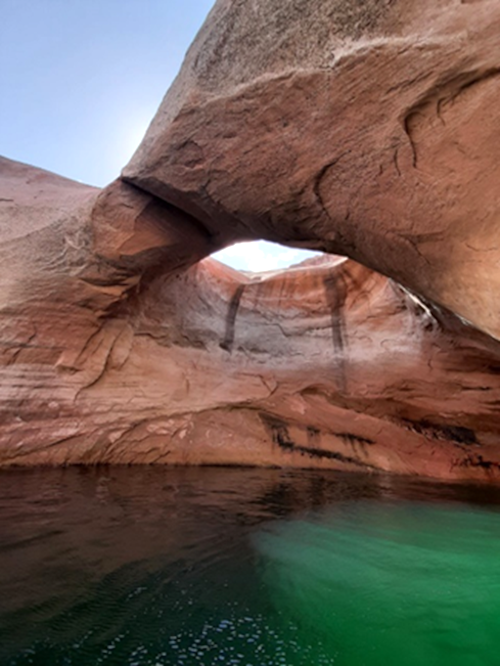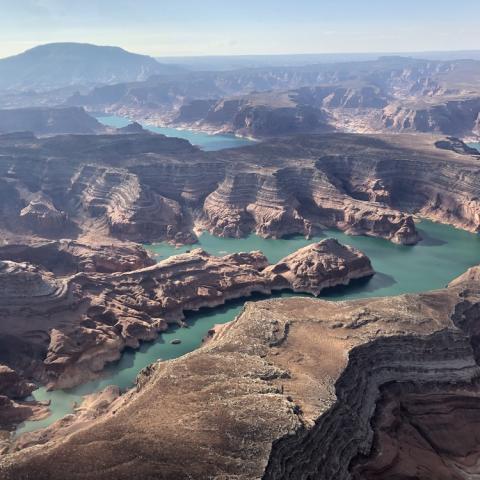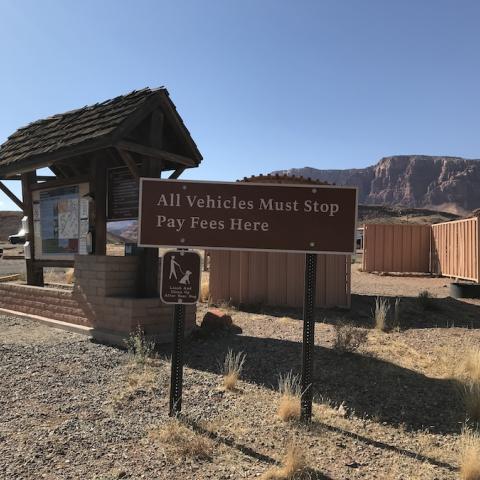
The arch before it collapsed/NPS file
A well-known arch at Glen Canyon National Recreation Area along Lake Powell, nicknamed "Toilet Bowl" as well as "Hole in the Roof" and other names, has collapsed.
Rangers say the arch, located in Rock Creek Bay, collapsed on Thursday, although a park release did associate a cause. The “Double Arch” geologic feature was also referred to as “Crescent Pool.”
No injuries were reported to have resulted from the collapse.
Double Arch was formed from 190-million-year-old Navajo sandstone originating in the late Triassic to early Jurassic periods, park staff said.
Since formation, this fine-grained sand feature has been subject to spalling and erosion from weather, wind, and rain. Changing water levels and erosion from wave action is suspected of contributing to the ultimate collapse of the arch.

After the arch collapsed/NPS August 9, 2024
"This event serves as a reminder of our responsibility and need to protect the mineral resources surrounding Lake Powell. These features have a life span that can be influenced or damaged by manmade interventions," said Glen Canyon Superintendent Michelle Kerns. "While we don’t know what caused this collapse, we will continue to maintain our resource protection efforts on Lake Powell for future generations to enjoy. Please enjoy our resources but leave no trace.”



 Support Essential Coverage of Essential Places
Support Essential Coverage of Essential Places







Comments
Cause of collapse: uh, gravity?
Global Warming? Climate Change? Donald Trump mean Tweets?
None of the above......SHlT HAPPENS!
This will be blamed on climmat change mark my word. Not natural events that caused the erosion.
IMHO, the Park Superintendent should not have made an unsubstantieated claim that human activity contributed to the collapse of the arch. Her statement should have said that we don't know what caused the collapse as yet, and leave it at that.
Time, wind, rain, erosion. All things eventually come to an end.
After many many years of it being there gravity decided to randomly pull it down? Cool, cool.
It's quite possible that over time the sand and rock supporting it changed and weakened due to rain, vibration, wind and manmade activity. Natural formations do fail eventually given the right conditions. This one looked like it could give way eventually due to its extensive overhang with no support. I am not any kind of expert but it seems logical to me.
It seems so difficult for some folks here to deal with the truth, eye witness observations, and science.